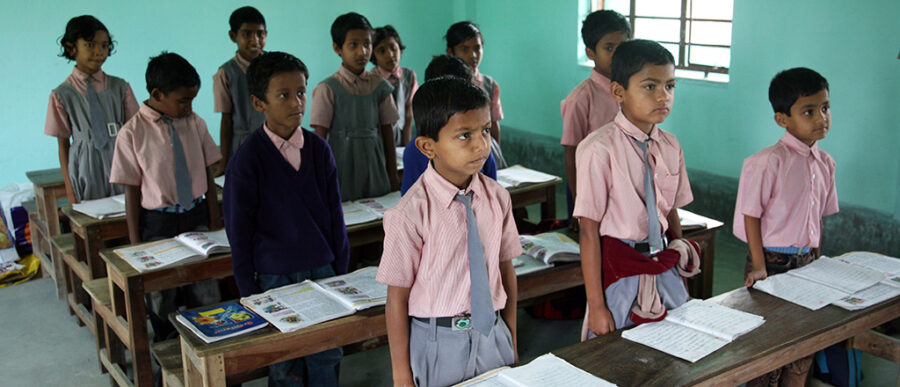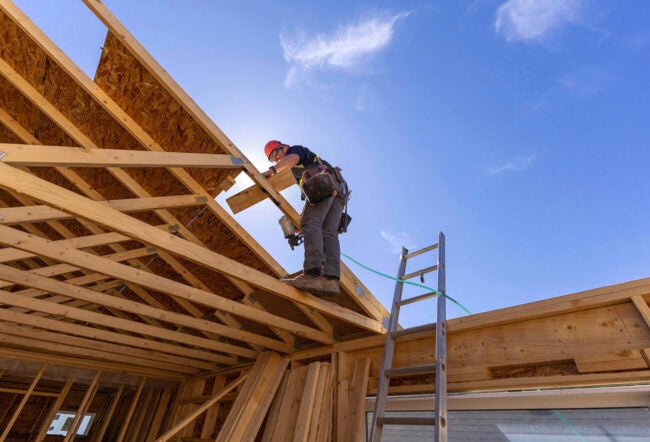India is currently among the most optimistic nations in the world, with the Narendra Modi government promising reforms and growth. But for the efforts to really bear fruit, it is necessary to focus on education, says Mitul Desai in this op-ed. Desai is on the U.S. Tri-State Board of Pratham, India’s largest education NGO. He is vice-president at the MasterCard Center for Inclusive Growth. He was earlier a senior advisor at the U.S. State Department and an equity research analyst at Piper Jaffray. He began his career as an intellectual property attorney. The solutions to the education problem are well known, he says. “The remaining challenge is to scale them.”
In September, U.S. President Barack Obama hosted Indian Prime Minister Narendra Modi for a widely anticipated meeting, where they discussed, according to a White House statement, ways to “accelerate economic growth, bolster security cooperation and collaborate on activities that bring long-term benefits to both countries and the world.” The two leaders further stated that they would work on “cooperation in every sector for the benefit of global stability and people’s livelihoods over the next 10 years.” Modi remarked, “We now have to revive the momentum and ensure that we get the best out of it for our people and the world.”
The timing is fortuitous. Global investors have been in an India state-of-mind of late. Optimistic about Modi’s business-friendly track record and historic political mandate for reform, investors have driven India’s headline Sensex – the Bombay Stock Exchange Sensitive Index — over 34% this year, making it one of the world’s best performing stock markets – an important signal of confidence in Modi’s drive to grow jobs and the economy.
However important improved business sentiment and rising stock prices are, they are not enough. It is only through rapid and sustained economic growth that India will measurably reduce poverty levels and fully leverage its demographic dividend.
History shows that doing so is not easy. Since 1950, only 13 developing countries have achieved growth rates of 7% or higher for 25 years or more. India’s GDP has not exceeded 7% since 2010, and some project that it will not do so again until 2019.
While there is no precise recipe for achieving long-term growth, we do know that high-quality education is a core driver.
Human Capital Is the Key
In an influential World Bank report about the best approaches to robust economic growth and poverty reduction, a distinguished panel of the globe’s top economic minds concluded that “every country that sustained high growth for long periods put substantial effort into educating its citizens and deepening its human capital.”
The numbers couldn’t be clearer:
- Each additional year of education increases wages by an average of 10%.
- An extra year of school raises a country’s GDP on average by 0.5% annually.
An educated populace catalyzes economic growth through multiple channels. Only with a critical mass of properly trained engineers, plumbers and electricians, for example, can India successfully build its infrastructure. More educated citizens also mean better governance and improved health outcomes.
India’s educational report card shows ample room for improvement. The World Economic Forum’s Human Capital Index, which takes into account educational quality in addition to access, ranked India 78 out of 122 countries. The latest United Nations Human Development Report put India’s mean years of schooling at just over four and its literacy rate for those 15 and over at only 63%. India, in other words, is home to the largest population of illiterate adults on the planet. The 2013 Annual Status of Education Report (ASER), administered by the Indian NGO Pratham and drawing on a sample size of 569,664 children, shows that barely 47% of Indians in the fifth grade can read at a second-grade level.
“While there is no precise recipe for achieving long-term growth, we do know that high-quality education is a core driver.”
The enormity of the problem is staggering, but it can be overcome. The first step is a serious focus on education. Prime Minister Modi has already shown his commitment to the issue, with the BJP releasing an education manifesto and promising to increase public spending on education from 4% of GDP to 6%, as well as to review “the salary structures associated with the teaching staff.”
Education for All
The BJP government also called for the universalization of secondary school education, as well as an assessment of its flagship Sarva Shiksha Abhiyan (Education for All) program, designed to make primary education readily available and mandatory. The government also announced a plan to open new schools and strengthen existing infrastructure — providing additional classrooms, toilets and drinking water, and expanding the reach of education facilities.
The second and fundamentally crucial step, however, is to go beyond access and incorporate an emphasis on quality. Prime Minister Modi’s ambitions for increased access to education are commendable. But, as the ASER study asserts, the presence of education must be paired with satisfactory learning outcomes.
India’s enrollment numbers are relatively high, with over 96% of children in the age group 6-14 enrolled in schools. However, there is much to be done with the basic skills of these children. The ASER study found that the proportion of grade three students who can read at least at a first grade equivalent-level rose marginally from 38.8% in 2012 to 40.2% in 2013. In addition, the ASER report found that children were still struggling with basic arithmetic – with only 26.1% of students in third grade, for example, being able to do simple subtraction.
The problem will only be compounded in later years: How can a student learn at a higher level if they don’t possess the fundamental building blocks of reading and arithmetic?
“Only with a critical mass of properly trained engineers, plumbers and electricians can India successfully build its infrastructure.”
It is imperative that the solutions involve inputs from all relevant stakeholders, including not just the Indian government, but also India’s citizens, civil society, entrepreneurs and corporations.
I know that collaborative public-private efforts can work. In a small village in Bihar, for example, literacy rates went from 30% to 60% by restructuring classrooms according to reading ability instead of age – a low cost and highly effective intervention that was eventually implemented in 70,000 schools, due to a coordinated effort by Pratham, citizen volunteers and the local government.
The lesson is that the solutions are largely known; the remaining challenge is to scale them. We encourage the BJP government to utilize these lessons and work with private organizations to reach their goals. Individual citizens and organizations like Pratham can build and execute real solutions to improve the quality of education. The magnitude and urgency of India’s educational challenge is such that partnership between the public and private sectors is the only way forward.
The return of business optimism is a good thing, and India does remain uniquely positioned to be the world’s predominant investment-led growth story for the next two decades. For too long, however, India has been a story mostly of potential. Turning possibility into reality will demand a greater focus on quality education.
It is arguably the only investment that really matters.



